BIOTECHNOLOGY: PRINCIPLES AND PROCESSES
INTRODUCTION
- Biotechnology deals with techniques of using live organisms or enzymes from organisms to produce products and processes useful to humans.
_____________↓_______________
↓ ↓
Parameters Traditional biotechnology Modern biotechnology
• Organism involved • Microbes • Genetically modify
organisms
• Production • Small Scale • Large scale
• Example/ • Curd,bread or • In vitro fertilisation leading to
Technique wine making a test- tube baby.
include • Synthesising a gene and using it
• Developing a DNA vaccine
• Correcting a defective gene. - Note:- EFB (European Federation of Biotechnology)
The integration of natural science and organisms , cells, parts thereof and molecular analogues for production and services.
- It encompasses both traditional view and modern molecular biotechnology.
PRINCIPLE OF BIOTECHNOLOGY/CORE TECHNIQUES INVOLVED IN MODERN BIOTECHNOLOGY
________________|_______________
↓ ↓
Parameters Genetic engineering Bioprocesses engineering
• Definition • Techniques to alter the • Maintenance of sterile
chemistry of genetic material ambience in chemical
to introduce these into engineering processes
host organisms, and to enable growth of
thus change the only the desired microbe/
phenotype of host organism eukaryotic cell in large
• Include • Creation of rDNA quantities.
• Gene cloning • Manufacture of
• Gene transfer biotechnological products
like antibiotics,
vaccines enzymes etc.
Note:- The ability to multily copies of antibiotic resistanse gene in E.coli was called cloning of antibiotic resistance gene in E. coli.
ADVANTAGES OF BIOTECHNOLOGY OVER OTHER TECHNIQUES
Methods Advantage Disadvantage
I Asexual reproduction – preserves genetic No varitions
information
II Sexual reproduction -Provides opportunities Some of which may
for variations and be harmful to the
formulation of unique organism as well
combinations of the population
genetic setup
III Traditional -Used in plant and Very often lead to
hybridisation animal breeding inclusion and multiplication of undesirable genes
along with desirable genes
IV Genetic –Allows us to isolate
engineering and introduce only one
or desirable genes
without introducing ____
undesirable genes
into target organism
THREE BASIC STEPS IN GENETICALLY MODIFYING ORGANISMS
(1) Identification of DNA with desirable genes
(2) Introduction of the identified DNA into the host
(3) Maintenance of introduced DNA in the host and transfer of the DNA to its progeny

KEY TOOLS OF RECOMBINANT DNA TECHNOLOGY
(1) Enzyme (2) Vectors (3) Competent host cells
Enzyme- Most commonly used enzymes in genetic engineering are
I. NUcleases
II. DNA polymerase
III. Ligases
Nucleases- Catalyse the cleavage of nucleic acid:-
(I) Exonucleases- Remove nucleotides from the ends of the DNA
(II) Endonucleases- Make cuts at specific positions within the DNA i.e at recognition/palindromic sequence
↓
>Intheyear 1963, the two enzymes responsible for restricting the growth of bacteriophage in Escherichia coli were isolated.
____________________↓__________________
↓ ↓
Methylase Restriction endonuclease/Molecular
scissors
Add methyl groups to Cut the DNA of bacteriophage. bacterial DNA
- Palindromic sequence read same on the two strands (from 5′ → 3′ and 3’→5′ direction) when orientation of reading is kept same.
ENZYMES
- Restriction endonuclease:-
> More than 900 restriction enzymes have been isolated from over 230 strains of bacteria (prokaryotic cell) each of which recognise different reconition sequences. - Nomenclature/Naming of enzyme:-
I II III IV
Eco RI→ Genus Escherichia
→ Species coli
→ Strain RY13
→ Order of isolation - Functions by:-
> ‘Inspecting’ the length of DNA sequence
> Binds to the “specific recognition sequence“
> Cuts the two strands of ds DNA at specific points in their sugar- phosphate backbones and leaves single stranded portions at
the ends.
> These overhanging stretches and called sticky ends. - Ligase
> When source DNA and vector DNA are cut by the same restriction enzyme the resultant DNA fragments have the same kind of ‘Sticky-ends’. Sticky ends are named so because they form hydrogen bonds with their complementry cut counterparts and this stickiness facilities the action of the enzyme DNA ligase._____________________________________________________________________
> First restriction endonuclease- Hind II : Isolated and characterised five years later, recognises sequence of 6 bp.
> First combinant DNA was prepared by Stanley Cohen and Herbert Boyer, 1972 :
• Antibiotic resistant gene | Introduced
• Plasmid of Salmonella |→ Recombinant plasmid → →→→→
into
→ Escherichia coli.
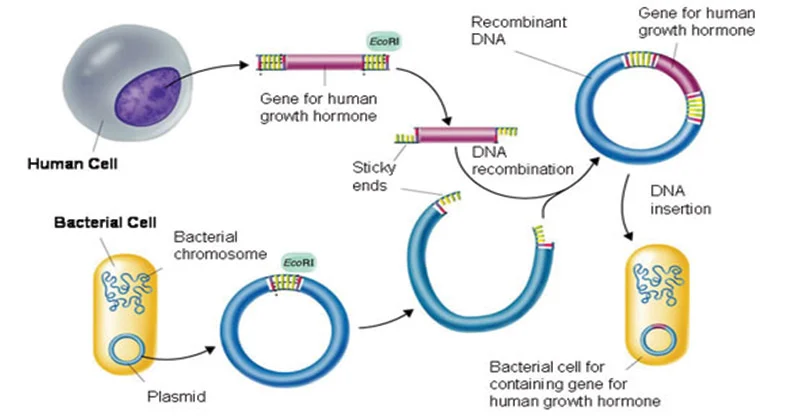
CLONING VECTORS
> Vectors are vehicles for delivering foreign DNA into recipient cells.
> Vectors used at present are engineered in such a way that they help easy linking of foreign DNA and selection of recombinants from non recombinants.
Features of cloning vectors:
(1) Origin of replication (ori):
• Sequence from where replication starts
• Responsible for controlling copy number of the linked DNA
• Those vectors are preferred which support high copy number.
(2) Selectable Marker:-
• Helps in selection of transformants
• Normally, the genes encoding resistance to antibiotics such as ampicillin, chloramphenicol, tetracycline or kanamycin, etc. are
considered useful selectable markers for E. coli
• The normal E.coli cells do not carry resistance against any of these antibiotics.
(3) Cloning Sites/Restriction Sites
> Single recognition site for a restriction enzyme within the vector is a preferable feature.
> Presence of more than one recognition sites within the vector will generate several fragments, which will complicate the gene cloning.
> The ligation of alien DNA/gene of interest (GOI) is carried out at a restriction site present in one of the antibiotic resistant genes.
Transformation:- > Procedure through which piece of foreign DNA is introduced in a host bacterium.
> Insertional inactivation:- Insertion of GOI within antibiotic resistance gene/selectable marker results in inactvation/formation of the coded product
> Hypothesis: Insertion of GOI at Bam HI site in tet R.
> If transformation falls- Non transformants are obtained in antibiotic lacking agar medium but they don’t grow on antibiotic rich medium.
> If trans formation successful- Transformants obtained are two types.
(i) Non Recombinants (ii) Recombinants
E. coli vector pBR 322 Insertional inactivation
Gene of interest X √
cloned
Resistance to ampicillin √ √
Resistance to tetracycline √ X
[ due to inactivation]
> All transformants are not recombinants but all recombinants are transformants.
> One antibiotic resistant gene helps in selecting the transformants whereas the other antibiotic resistant gene helps in selection of recombinants.
> rop– codes for the proteins involved in the replication of the plasmid
Plasmids as vectors:-
> Extra chromosomal , circular, double stranded DNA
> Replicate independent of the control of chromosomal DNA (autonomously)
> They may have 1 to 2 copies per cell or even 15-100 copies per cell.

OTHER CLONING VECTORS
- Selection of recombinants due to inactivation of antibiotic resistant gene as in pBR322 is a cubersome procedure because it requires simmultaneous planting of two plates having different antibiotics.
- To overcome the disadvantage of pBR322. alternative selectable markers (lac Z) acting as reporter enzyme have been developed which differentiate recombinants from non-recombinants on the basis of their ability to produce colour in the presence of chromogenic substrate.
> lac Z gene coding for ß- galactosidase acts as selectable marker in the plasmid.
> Experiment:- Insert foreign DNA at lac Z gene +transformation
in E. coli
↓ Chromogenic substrate
____________________
↓ ↓
Fails Succeeds
↓ ↓
Blue coloured colonies White coloured colonies
↓ ↓
Non-recombinants Recombinants - Ti plasmid of Agrobacterium tumefaciens
> Agrobacterium tumefaciens, apathogen of several dicot plants is able to deliver a piece of DNA known as T-DNA to transform normal plant cells into a chemicals required bu the pathogens.
> Disarmed tumour inducing (Ti) plasmid is used which is no more pathgenic to the plants but is still able to use the mechanism to deliver the genes of our interest into varieties of plants. - Bacteriophages
> High copy number than plasmid - Retroviruses:
> Retroviruses in animals have the ability to transform normal cells into cancerous cells.
> Disarmed retroviruses are used to deliver desirable genes into animal cells.
METHODS OF TRANSFORMATION
I. Micro- injection
> Recombinants DNA is directly injected into the nucleus of an animal cell.
II. Biolistic/Genegun
> Plants cells are bombarded with high velocity micro- particles of gold or tungsten coated with DNA.
III. “Disarmed pathogen” vector
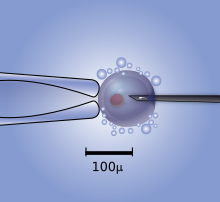
COMPETENT HOST FOR TRANSFORMATION WITH RECOMBINANT DNA
- DNA is hydrophilic, so it can not pass through cell membranes
- In order to force cell to take up alien DNA/rDNA. it must first be made ‘competent’ by treating with ice cold calcium chloride.
- Entry of rDNA in host cell is due to transient pores created by heat shock (42° C) and not due to Ca+2 ions.
- Divalent cations increases the efficiency with which DNA enters the bacterium through pores in its cell wall.
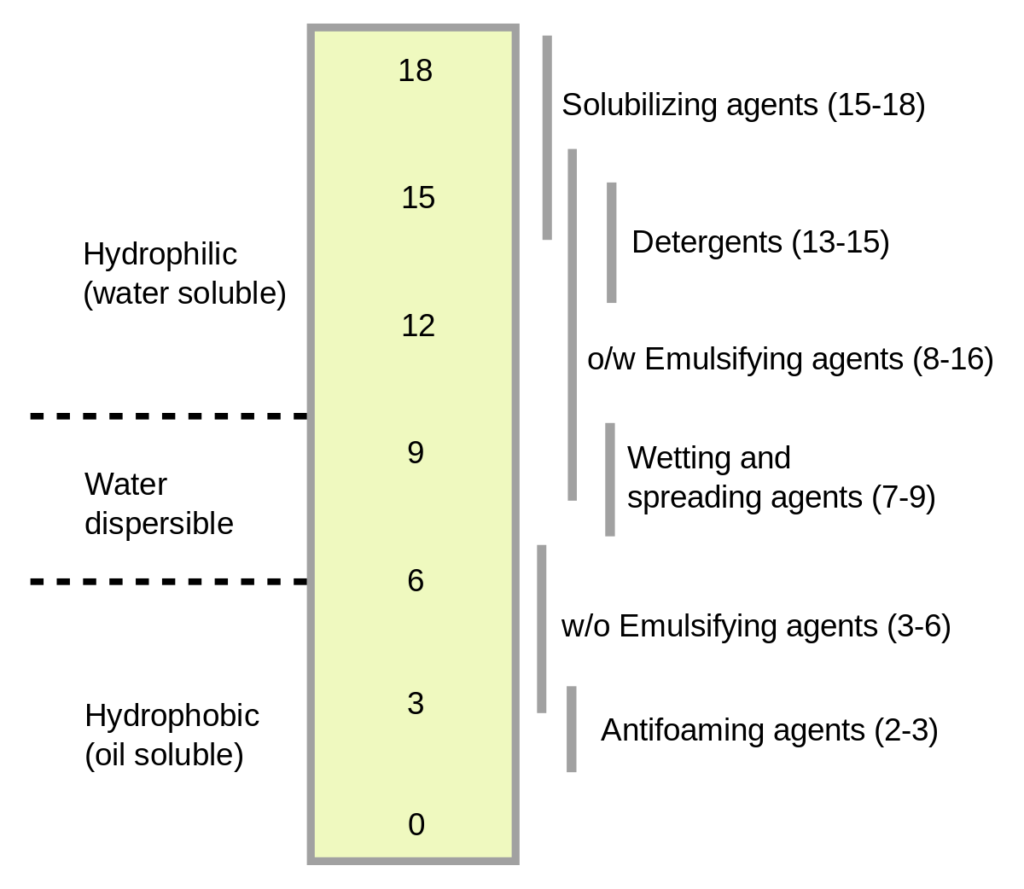
PROCESS OF RECOMBINANT DNA TECHNOLOGY
Isolation of DNA
↓
Fragmentation of DNA by restriction endonucleases
↓
Isolation of desired DNA fragment (electrophoresis)
↓
Amplification of gene of interest (PCR)
↓
Ligation of the DNA fragment into a vector
↓
Transferring the alien DNA/recombinant DNA into the host
↓
Culturing the host cells in a medium at large scale (Bioreactors)
↓
Extraction and purification of the desired product
I. Isolation of the Genetic Material (DNA)
> In majority of organisms, DNA is the genetic material
> Since DNA is enclosed within the membranes, we have to
break the cell open to release DNA along with other
macromolecules→ Bacteria → Lysozyme
→ Fungi→ Chitinase
→ Plant cell→ Cellulase
- In order to get DNA in pure form (free from other macromolecules), it is treated with different enzymes like RNase, Protease etc
ethanol Chilled process
pure DNA→Centrifuge→→→→→ to precipitate DNA→→→ Spooling- I. Fragmentation by restriction endonucleases
III. Separation and isolation of DNA fragments.
• Gel electrophoreis
• Separation of negatively charged DNA molecules under an electric
field through a medium/matrix.
• Most commonly used matrix for DNA separation is
Agarose→ Natural polymer obtafrom sea weeds.
→ Separate DNA fragments through seiving effect.
Stained with Exposed to
Gel→ → → → Ethidium Bromide→ → → → → U.V rays→
Appears
→ → → Bright orange bands→ Removal of DNA fragment
Process
from gel→ → → Elution Note:- Purified DNA fragments are generally amplified (PCR) before constructing rDNA by joining with cloning vector.
- I. Fragmentation by restriction endonucleases
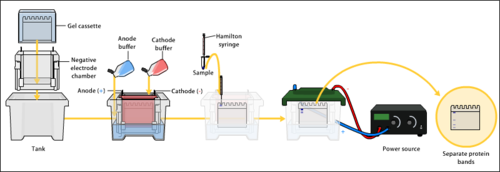
PROCESS OF RECOMBINANT DNA
TECHNOLOGY (cont..)
iv. PCR- Polymerase chain reaction
• In vitro amplification of DNA (gene of interest).
Reaction mixture Work/Function
Nucleotides Formation of DNA chain
Primers 2 sets of chemically synthesised oligonucleotides, complementary to be regions of DNA
Taq polymerase Thermostable DNA polymerase, isolated from bacterium, Thermus aquaticus, remains
active during high temperature induced
denaturation of dsDNA. It extends the
primes i.e. meant for chain elongation.
Genome DNA Template DNA for gene of interest
• The amplified fragment if desired can now be used to ligate with a vector
for further cloning
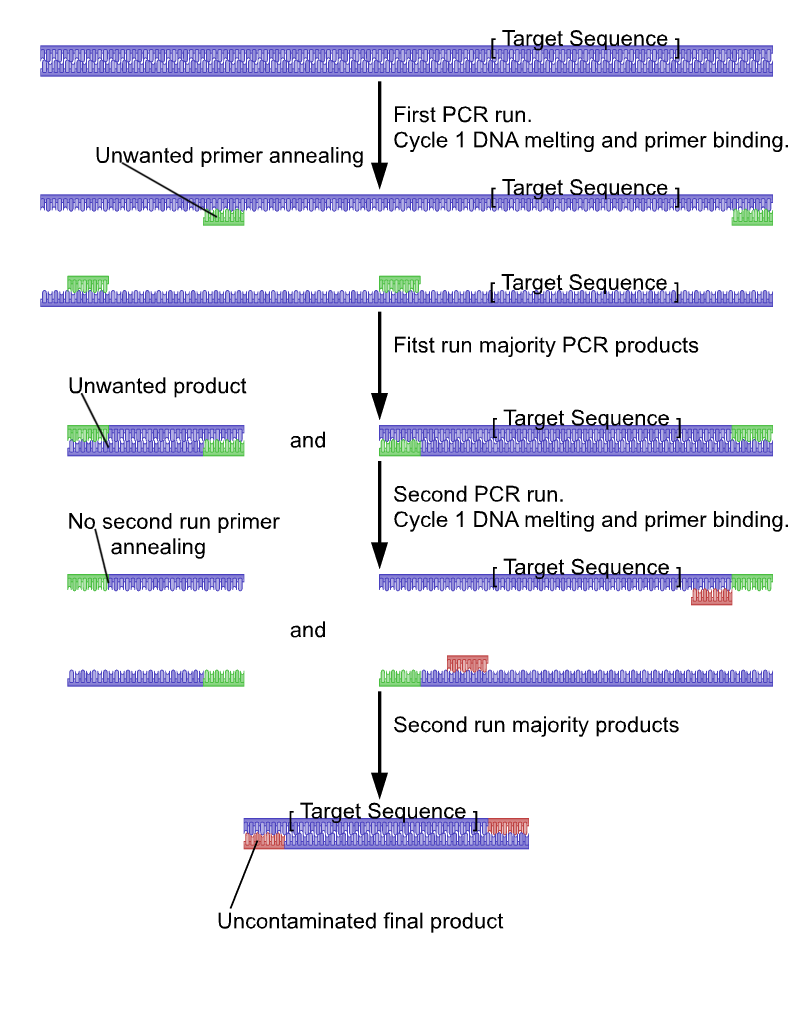
PROCESS OF RECOMBINANT DNA
TECHNOLOGY (cont..)
V Ligation of the DNA fragment DNA into a vector by DNA ligase
↓
VI. Insertion of recombinant DNA into the host cell
- Transformed host cells are selected with the help of selectable marker genes.
VII Culturing of recombinant host cells (Biosynthetic stage)
> The cells harbouring cloned genes of interest may be grown in
Laboratory/ Bioreactors
Parameter Laboratory Bioreactors
Culture Small volume Large volume (100-1000 lts)
Maintaining Not possible √
optimal conditions
Growth rate of cell Never optimal Optimum
Production Small scale Large scale
Commonly used Bioreactors→Cylindrical or with curved →Facilitate mixing
are stirred type having base of reactor contents
→ Stirrer → Facilitate even mixing and oxygen
availability throughout the bicreactor
→ Agitator system
→ Oxygen delivery system
→ pH control system
→ Foam control system
→ Sampling ports→ To withdraw small volume
of culture periodically
VIII. Downstream processing
> Separation and purification of the desired product/recombinant protein from heterologous host (non native host).
> Product has to be formulated with suitable preservatives.
> Strict quality control testing is done for each product
> The downstream processing and quality control testing vary from
product to product.
• Bioreactors :- Vessels in which raw materials are biologically converted into specific products using microbial plant, animal human cells and provide
optimal growth conditions (temperature, pH, substrate, salts, vitamins,
oxygen)
IX. Product is subjected for marketing as a finished product.
Note:- In open culture System/Continuous culture System
> Used medium is drained out from one side while fresh medium is added from the other to maintain the cells in their physiologically most active lo/exponential phase
> Large biomass → Higher yields of desired protein
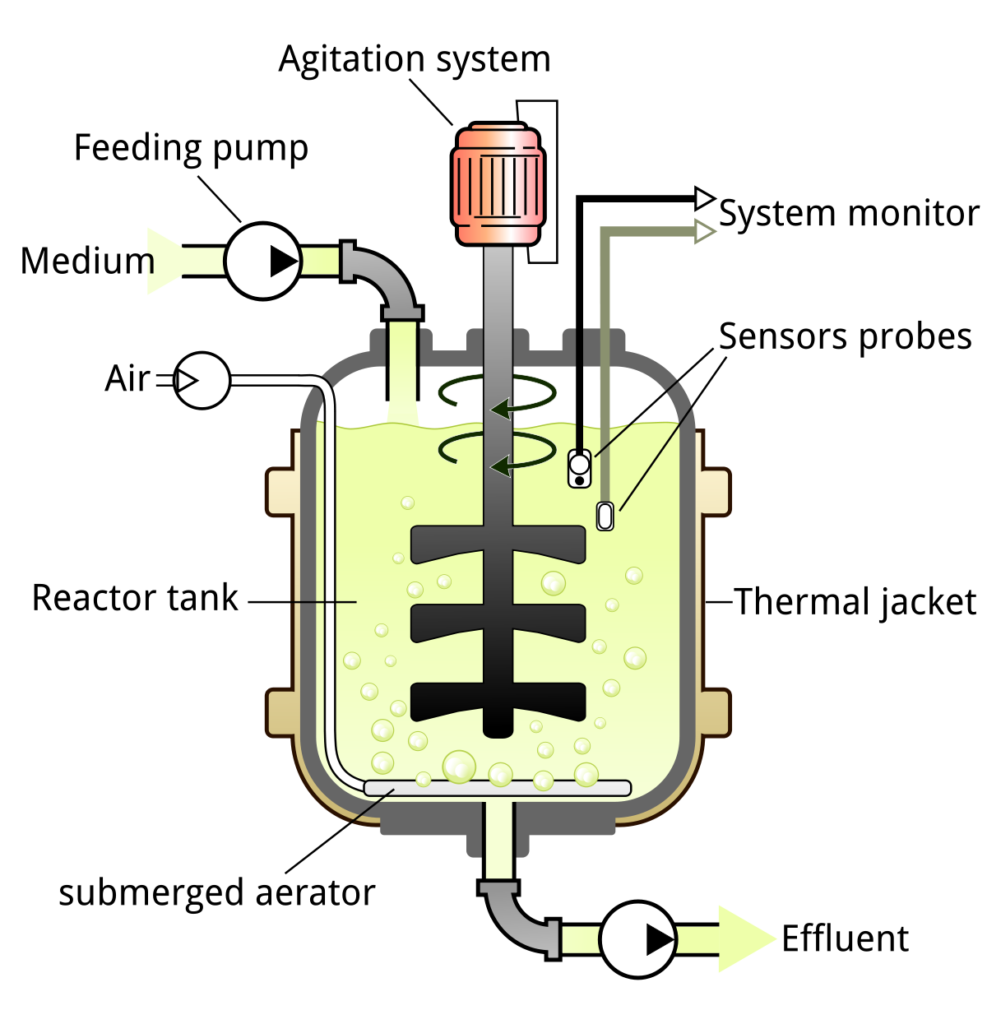
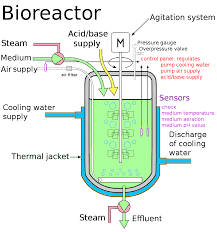
- Biotechnology is a multidisciplinary field that utilizes living organisms, cells, and biological systems to develop products and technologies for various applications. It encompasses areas such as healthcare, agriculture, industry, and environmental management. Biotechnology impacts our lives by providing solutions to challenges in medicine, food production, energy, and the environment.
.
- The key principles of biotechnology include genetic engineering, molecular biology, fermentation, bioinformatics, and process optimization. These principles involve manipulating biological systems at the molecular and cellular levels to produce desired products or achieve specific outcomes.
- Genetic engineering involves modifying the genetic makeup of organisms by introducing or altering specific genes. In biotechnology, genetic engineering techniques are used to create genetically modified organisms (GMOs), produce recombinant proteins, develop gene therapies, and engineer microbial strains for industrial processes.
- Biotechnological processes in medicine include the production of recombinant proteins (e.g., insulin, growth factors), development of vaccines, gene therapy for genetic disorders, tissue engineering for regenerative medicine, and personalized medicine based on genetic testing and analysis.
- Biotechnology in agriculture involves the development of genetically modified crops with desirable traits such as increased yield, pest resistance, drought tolerance, and nutrient fortification. It also includes precision farming techniques, biofertilizers, and bioremediation strategies to enhance soil fertility and reduce environmental impact.